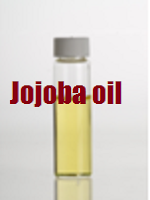Uses of Jojoba oil
Now a days in every beauty product, shampoo and skin care lotions most commonly used oil is Jojoba oil. Jojoba is a small shrub native to the deserts of the Southwestern United States, and northern Mexico.
 Another name for this plant is quinine nut, coffee berry, wild hazel pignut, deer nut, and goat nut. Its scientific name, chinensis, comes from a misunderstanding by botanist Johann Link. He read the abbreviation Calif which was included with a specimen sent to him by a field botanist as reading China, and so named it based on that. Because of the rules of taxonomy, the original name must be used, leading to a somewhat misleading epithet.
Another name for this plant is quinine nut, coffee berry, wild hazel pignut, deer nut, and goat nut. Its scientific name, chinensis, comes from a misunderstanding by botanist Johann Link. He read the abbreviation Calif which was included with a specimen sent to him by a field botanist as reading China, and so named it based on that. Because of the rules of taxonomy, the original name must be used, leading to a somewhat misleading epithet.Structure of Jojoba Plant:
It can grow up to 6 feet (2m) tall. It has oval leaves, which are a waxy grayish green. The flowers are yellowish green and have no actual petals. The fruit contains a hard dark brown seed, which is what the jojoba oil is extracted from, and which are also eaten by rabbits and various rodents. For most mammals, though, the jojoba oil is either toxic or a strong laxative.
Jojoba oil is a mixture of wax esters, 36 to 46 carbon atoms in length. Each molecule consists of a fatty acid and a fatty alcohol joined by an ester bond. 98% of the fatty acid molecules are unsaturated at the 9th carbon-carbon bond (omega-9).
Properties of Jojoba oil:
- Jojoba oil is used as a replacement for whale oil.
- Jojoba oil is a fungicide, and can be used for controlling mildew.
- jojoba oil is edible but non-caloric and non-digestible, meaning the oil will pass through the intestines unchanged and can cause an unpleasant result called steatorrhea.
- Jojoba biodiesel has been explored as a cheap, sustainable fuel that can serve as a substitute for petroleum diesel.
Cosmetic uses of Jojoba oil:
Jojoba oil is easily refined to be odorless, colorless and oxidatively stable, and is often used in cosmetics as a moisturizer and as a carrier oil for specialty fragrances. It is easy to apply smoothly, and doesn’t evaporate the way most water-based moisturizers will. It can be used as a very basic hair conditioner, or can be added to existing conditioner. It helps make drier hair shinier, and also moisturizes to prevent dandruff. Jojoba oil is also often used as a moisturizer for both the face and hands, again either by itself or in tandem with an existing moisturizer. Jojoba oil also functions as an excellent prep oil for shaving, massage oil, lip balm, and make-up remover.
Jojoba oil for Cuticle Care:
Ingredients for making a lotion:
- 2tbsp of olive oil
- 2tbsp of joboba oil
- 2tbsp almond oil
- 2tbsp of honey
- 1 tsp of honey
- 1 tsp of vitamin E oil or 3-4 vitamin E capsules(broken open)
Method:
Combine all the ingredients. Before applying this treatment, soak nails in warm water for 10 minutes. Pat dry. Apply the mix on your hands, concentrating on the nails and cuticles. This recipe can be used every time you wash your hands or take a shower. It yields 4 hands treatments. It is an excellent way to do things at the same time : the essential oils used in it strengthen the nail and honey serves to moisturize the cuticles.

Comments
Post a Comment